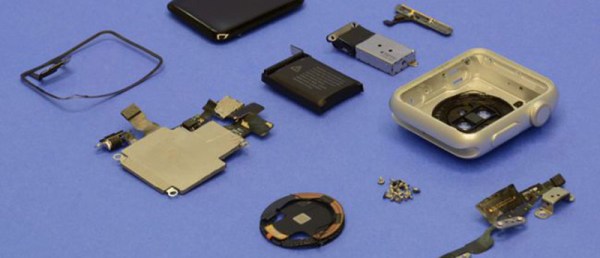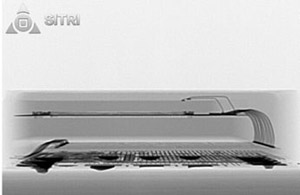I love the Hackaday crowd. Despite a long day standing at a booth or crawling the fairgrounds as a spectator, everyone still made it on Saturday night to the 2nd Annual Hackaday BAMF meetup and made it one for the annals of hacker history. Just look at that crowd… I see a couple of Hackaday Prize Judges, a friend I met in Germany (who I actually found out I first met at this same event last year), and many many more great people. I don’t want to spoil the fun so check out the full size over on [Rich Hogben’s] photo log and see how many you can identify.
We started this gathering last year as a come-as-you-are and bring-what-you’re-proud-of after party to Bay Area Maker Fair. We don’t rent out the bar — O’Neil’s Irish Pub in San Mateo — but we had a handshake agreement for drink tickets (thank you to Supplyframe for buying the first round for everyone) with the bartenders. The place feels like the perfect size, and before long we were packed into every available space. The ramp to the restroom area in the back was a gauntlet of conversation — enough room to walk by but you felt like you were interrupting people talking to those across from them.
The amount of hardware on hand was spectacular. Taking pictures of it was tough in the tight quarters. I got a look at the first prototype of the Pebble smart strap. I really enjoyed seeing OSHChip (pictured above) which is an ARM Cortex-M0 chip and BLE rolled into a DIP-16 form factor. [Sophi’s] HeartBeat Boombox was a big hit; it uses the heartrate and blood oxygen sensors seen above to drive a drumbeat. Those blinky glasses should look familiar. [Garrett Mace] and his colleague [Jason] were on hand. These Macetech glasses are from a couple of years back but don’t worry, they were sporting the newest RGB flavor which I’m told will have black solder mask and integrated controller among other tasty goodies.
Perhaps the best way to tell the success of the night is that there were a lot of friends in the room that I never realized were even there. The next day I met up with [Sarah Petkus] and [Mark Koch] and was surprised to find they had been at the Hackaday meetup and I missed them. The same thing happened when I looked at [Rich’s] album from the night and saw [Trey German] was there too. I wasn’t hiding and I wasn’t stuck in one conversation, it was just that kind of a party that makes the room feel like a TARDIS but somehow the night doesn’t last forever.
It’s hard to imagine BAMF without this Saturday gathering. If you missed it this year, add it to your calendar for next.















 Before he could do any of this, he first had to debug and fix the TK-85 which seemed to be having several age related issues. After swapping out several deteriorating IC sockets, he was able to get it running. He soldered wires directly to one of the logic chips that had the video and sync signals present on them, along with the +5V and GND connections and hooked them up to a breadboard. He then tested his circuit consisting of the TTL multiplexer, DIP switches and resistors. This worked, but not as expected, and after some digging around, he deduced that it was due to the lack of the back porch in the video signal. From Wikipedia, “The back porch is the portion of each scan line between the end (rising edge) of the horizontal sync pulse and the start of active video. It is used to restore the black level (300 mV.) reference in analog video. In signal processing terms, it compensates for the fall time and settling time following the sync pulse.”
Before he could do any of this, he first had to debug and fix the TK-85 which seemed to be having several age related issues. After swapping out several deteriorating IC sockets, he was able to get it running. He soldered wires directly to one of the logic chips that had the video and sync signals present on them, along with the +5V and GND connections and hooked them up to a breadboard. He then tested his circuit consisting of the TTL multiplexer, DIP switches and resistors. This worked, but not as expected, and after some digging around, he deduced that it was due to the lack of the back porch in the video signal. From Wikipedia, “The back porch is the portion of each scan line between the end (rising edge) of the horizontal sync pulse and the start of active video. It is used to restore the black level (300 mV.) reference in analog video. In signal processing terms, it compensates for the fall time and settling time following the sync pulse.”







 The core of the project is the
The core of the project is the 








